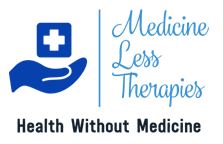Attunements of Rieki:
- There are typically three levels that can be attained, and these are centered on the attunement or empowerment process, combined with education and practice.
- While certain components are standard in achieving each of the levels, there is a wide variance in the way Reiki Masters (instructors) arrange their courses.
- The Reiki attunement is what makes Reiki unique to other forms of healing touch and energy work.
- This ceremony, called Reiju (Ray-joo) in Japanese, is performed by the Reiki Master and opens and expands the main energy channels of the student’s body, allowing universal energy, also known as Qi/Chi/Ki, to flow more freely and deeply.
- Because of this opening process, the attunement also does what Reiki is meant to do clear blockages. As a result, this can create significant energy changes within the individual and many will undergo an intense period of self-growth.
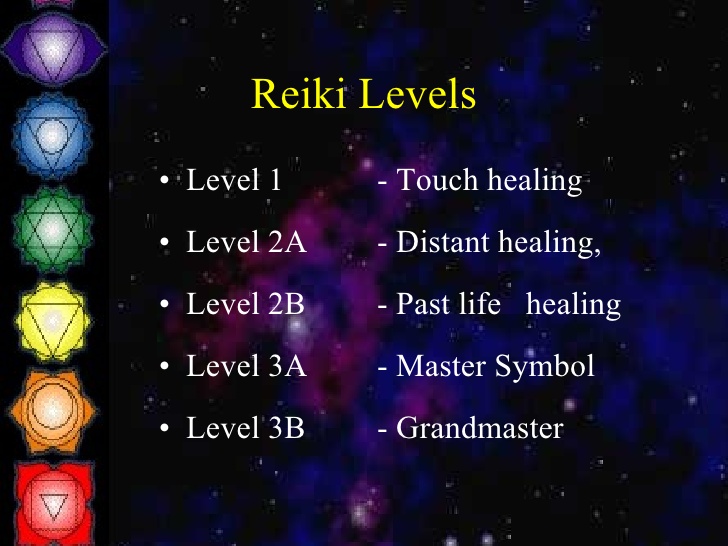
Here is a breakdown of the three levels of Reiki and each of the attunements:
Touch Healing Method (Level 1):
- This is a practitioner’s initiation into Reiki and is open to anyone.
- The focus during Level 1 is on opening the energy channels on a physical level, allowing the practitioner to connect to the universal life force energy, which flows from the cosmos through the crown of the head and down to the heart and hands.
- Many Reiki Masters emphasize self-Reiki as the goal of the Level 1 designation, encouraging students to focus on practicing Reiki on themselves, thereby working through their own obstacles.
- The Reiki Level 1 attunement was initially given in four separate attunements.
- There are some Reiki Masters who still teach using this method.
- However, many Reiki Masters provide the Level 1 attunement in one single attunement. Many experience physical symptoms of energy in their palms after the first attunement — including tingling, coolness or heat.
- Typically the Level 1 course also includes an overview of the history of Reiki, hand placements and self and group practice.
Distant Healing and Past Life Healing Method (Level 2):
- This is often defined by a focus on practicing Reiki on others, as well as an expanded opening of the energy channels. Additionally students receive the “Reiki symbols” and Level 2 attunement.
- The Reiki symbols allow the practitioner to connect more deeply to the universal energy, as well as draw on the qualities that the symbols represent. This includes the ability to provide distance Reiki, or sending healing energy to individuals wherever they may be.
- This symbol also may be used to clear energy blockages across time, as well as physical locations. Due to the intensity of the attunement process, some Reiki Masters recommend that at least 21 days to a full three months pass between receiving the Level 1 and Level 2 attunements (Level 1 is required to receive Level 2).
- However, there are many Reiki Masters that combine Level 1 and Level 2 into a combination class, and may even teach these over the course of one weekend.
- The Level 2 attunement is typically given in one single attunement, with a focus on opening up the central channel even more, with an emphasis on the Heart Chakra. Typically Level 2 also includes practice in drawing the symbols, invoking their qualities, as well as distance healing.
Master Symbol and Grandmaster Method (Level 3):
- The Reiki Master Level is traditionally considered the teacher’s level —a practitioner who has received the energy and knowledge to attune new Reiki practitioners.
- Many receive the Master attunement, along with the corresponding symbol, yet don’t feel comfortable or practiced in properly attuning others hence the distinction between Reiki Master.
- Becoming a Reiki Master also represents a deep commitment to the Reiki practice, and some feel that significant time should pass between achieving the Second Degree status and Master Level.
- Because the Master Level is taught in a wide range of methods, you should meditate on which path feels right for you and spend time and consideration in selecting a Master.
- The Reiki Levels provide a general organization of the progression of Reiki mastership. Because Reiki courses are taught and organized in a wide variety of methods, it’s important to research and find both the format and instructor that is right for you.
Effect of Reiki Attunements :
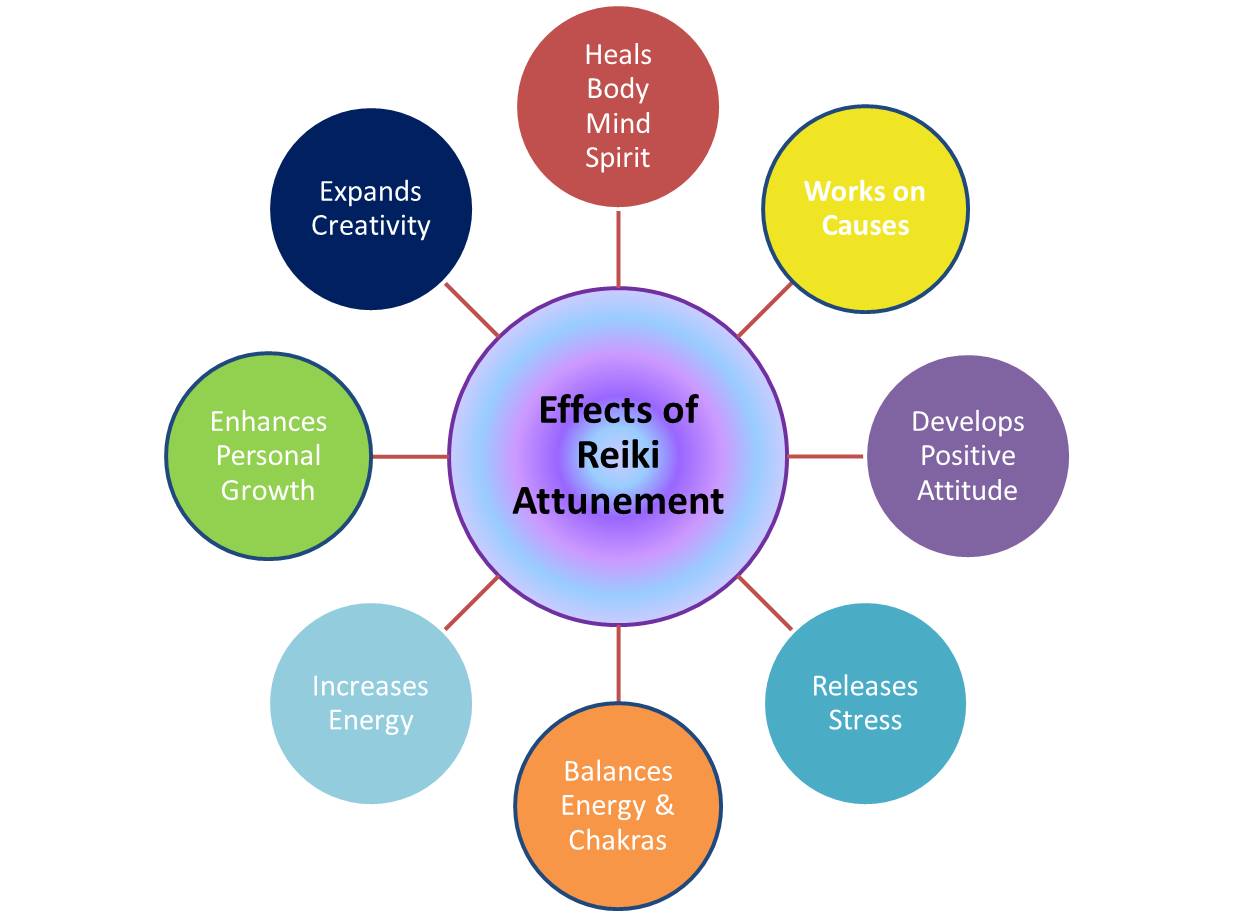
- Opening of the third eye
- An increase in intuitive awareness
- Other psychic abilities.
- A release of Negative Emotions
- Changes in food preferences
After level 1, comes level 2 and this comes with its own attunement process. As these are different and a person experiences a deeper understanding of Reiki, the side effects will also differ.
When attuned to level 2, you will become more aware of the importance of connected wholeness on all levels – physical, mental, emotional and spiritual.
This is to say that wholeness and balanced health become synonymous.
Attunement to Reiki Level 2 focusses on opening your heart chakra, which is the mid-point between the physical and spiritual realms. Once your heart chakra opens, intuition is highly increased and your sensitivity to subtle energies is also heightened.
Reiki Attunement side effects – Distant Healing:
- Highs & Lows of energy levels
- Emotional Swings in Mood
- Heightened connection to those around you
- Heightened compassion
- Aversion to confrontation
- Heightened Empathy
The master Reiki attunement is the final attunement you will receive. Some reiki masters will make a distinction between level 3 and master, however, many think of them as the same.
Here the focus is on you pineal and pituitary glands, which increase higher consciousness and intuition. These will be cleared and activated to work to their full potential.
The Reiki master will also work to align both left and right sides of the brain.
Your pineal gland will be directed to receive the Universal Source of Energy.
Master Reiki Symbols are permanently sealed into the student’s hands and aura, before the energies between student and Master, are disconnected.
Reiki Attunement side effects – Master Symbol:
- Seeing bright and glowing chakras
- Headaches or Head rushes
- A feeling of lightness
- Higher level of consciousness
- Deep empathy
- Deep compassion
- Deeper levels of understanding
- Unsteadiness or dizzyness
- A feeling of oneness with all
- Vibrations
The most important thing to take from this is that there are NO LASTING NEGATIVE Reiki attunement side effects. All effects you feel are aiding your body and mind and allowing your to grow as a spiritual person.
Three traditional Reiki techniques explained:
- Kenyoku Ho.
- Byosen Scanning.
- Reiji Ho.
“Kenyoku Ho “– Learn Spiritual Cleansing:
After learning more about the Five Reiki Precepts, but before proceeding to more practical aspects of Reiki, you should learn the simplest technique of spiritual cleansing, called Kenyoku Ho.
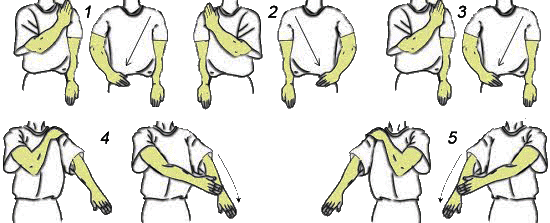
Spiritual cleansing is often neglected by many Reiki practitioners, yet it is an essential element of any spiritual practice.
- While regular self-healing sessions do some sort of “aura cleaning”, there is far more to cleansing than this.
- While you will learn about simple Kenyoku Ho technique right now, I will provide you with more knowledge about spiritual cleansing at the end of this book.
- Kenyoku Ho is focused on cleansing the upper part of your body – your torso, arms and hands, because these are the primary body parts that will interact with another person’s aura, or the energy field. Upon your aura, you carry a lot of nasty energies – this isn’t your fault because it’s normal, like dust gathering on the furniture.
- While Reiki protects both you and your patient from exchanging inner negative energies, your auras still interact with each other, thus cleansing is needed for safety reasons.
- Later on, I will explain it further, but right now, you should learn that Kenyoku Ho cleanse these unpleasant energies in a simple way.
From a more traditional perspective, Kenyoku Ho is meant to cleanse the upper body meridians and support both the healing process and increase the flow of energies, for example, before a Reiki treatment. The following tutorial is a bit more “modern” if you’re actually consider the existance of unpleasant energies and you’re using candles.
This technique should be used before and after a Reiki treatment. It’s quite simple.
The Practice of Kenyoku Ho:
- Intend for your hands to collect the negative energies from your aura.
- Use your right hand to stroke from your left shoulder down to your right hip, and while doing so, collect the energy. Then cast this energy with your right hand onto the floor, or into a candle if there’s any burning around.
- Repeat the step #3 with your left hand. This time, stroke from your right shoulder down to your left hip, and cast the energy onto the floor/into the fire.
- Repeat the steps #2 and #3.
- Use your right hand to stroke from your left wrist to the tips of your left hand fingers, collect the energy and cast it onto the floor/into the fire.
- Use your left hand to stroke from your right wrist to the tips of your right hand fingers. Collect the energy and cast it onto the floor/into the fire.
- Repeat steps #5 and #6
- If you prefer a modern approach and you’ve been casting the energy into the candle, cut yourself from the candle, that is: break the energetic cord. Imagine a connection between you and the candle, and visualize big scissors that cut this connection.
That’s it – it’s a simple technique, in which you cast all unwanted energies that might have gathered upon your aura into the flame, so they are burned and neutralized, or merely – in a more traditional way – onto the floor or into the ground.
After completing this technique, you can begin the process of scanning and figuring out, where Reiki is needed the most. It can be done through two techniques – Byosen and Reiji Ho.
Byosen – Scan For Illness:
Byosen is a simple technique of “scanning” and detecting blockages and energetic (spiritual) problems within the other person’s body by the use of your hands. You move your hand above the person’s body, and you sense for any energetic anomalies – areas that are warmer or colder; areas that seem to be denser; areas which seems like mountains or holes on the energetic flat surface.

These anomalies are the areas that require most Reiki healing. Remember these areas on the person’s body. When you will perform a full healing session later, focus on these areas more. Put more time to sending energy into these areas.
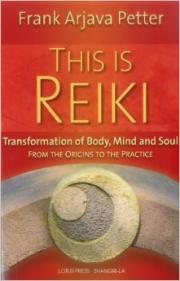
This is Reiki – by Frank Petter
The way of doing and explaining Byosen scanning is the simplest way to do so. It’s how Byosen was described for the last 15 years in most sources. But lately, Frank Petter explained Byosen in far more details in his book.
“This is Reiki: Transformation of Body, Mind and Soul from the Origins to the Practice“ – which is strongly recommend for everyone who wish to learn what Byosen and Reiki treatment are about.
Every person is sensitive to the energies of the aura and energy body. Reiki initiation triggers further development of such sensitivity, so with time, you may notice that you’re more and more sensitive.
Still, everyone sense things differently. That is why it’s a good idea to start a notebook, and after performing the Byosen scanning and Reiki treatment, consult with the patient about things you sensed.
The patient might share some information with you, so you can assign these findings to your feelings. This is how knowledge and experience are gained.
The Practice of the Byosen
Byosen can be performed right before the Reiki treatment. The person you’re about to scan should lie down on a bed.
- Relax and clear your mind. The regular practice of the Gassho meditation should help you with that.
- Place your most sensitive hand above the person. Let it hover few centimeters above the person’s body.
- Begin to scan – move your hand over the person. Start above the person’s hand and slowly move down to the person’s feet, covering the entire body slowly. It might take few minutes to do so.
- If you sense some energetic anomalies, note the place in your mind and move on. During the treatment, you will focus on these anomalous areas intensively.
Your most sensitive hand is the hand that feels the energies better – you can figure this out through experimentation, which you can perform on your friends or family members. Choose one hand, and scan for energetic anomalies.
When you find one, place your second hand above the anomaly and see if it can sense it better or worse. Repeat this exercise few times, and you will figure out which one of your hands is more sensitive to energies.
There’s another way to figure out where Reiki is needed the most – the very same technique as used by Mikao Usui about a hundred years ago.
Reiji Ho – Develop Your Intuition:
Reiji Ho is a technique of using and developing your intuition. Mikao Usui never really used the hands positions as we know them today.
He used to tell to send Reiki to head, shoulders, stomach, hands and legs, but the modern hands positions have been developed by Hayashi, Takata and modern teachers. Mikao Usui used to focus purely on his own intuition. The Reiji Ho teaches how to use your own intuition.
What is Intuition?
- Intuition is your inner voice of guidance – it’s wise, and always wishes the best for you. And it’s always present. But most people can’t listen to their intuition.
- They are too busy with their daily worries, concerns and fears. Reiki practice heals these loud voices by helping you relax through self-healing practice.
- It helps you put your mind at peace through Gassho meditation. And it helps you find safety in the material world through the practice of Joshin Kokyu Ho.
- The circle begins: you practice Reiki and meditations, and because of this, it’s easier to listen to your intuition.
- You receive guidance, so you act upon your intuitive feelings, and this leads to lessons, experiences and positive events.
- This makes you see that Reiki works, so you practice more. And because of this, you can hear your intuition more often, which leads you to more and more positive experiences.
- With time, after many lessons and experiences, you find your inner peace and happiness. This is how the intuition and Reiki walk side by side in the life of the practitioner.
- Intuition is all about “knowing things” – through images, visions, inner voice, dreams and feelings in your heart – you know what must be done.
- The more you practice Reiki, the easier it is to hear your intuition. And the more you listen to your intuition, the better your life becomes.
The Practice of Reiji Ho:
While intuition develops on its own because of regular practice, the Reiji Ho technique is meant to be used primary for the purpose of Reiki treatments.
Before you start the treatment, you perform Reiji Ho, and because of this, you know where you should place your hands for the treatment to be most effective.
You do not have to ask the person what hurts or what seems to be the problem – Reiki will guide you.
The Reiji Ho is quite simple.
- Close your eyes and relax.
- Form your hands into Gassho mudra and place them in front of your heart. Open yourself to the flow of Reiki.
- After few seconds, move your hands, still formed in the Gassho mudra, to your forehead. Touch your forehead and ask Reiki for guidance.
- Observe.
The intuitive guidance might come in many forms. For example:
- You may see the place or organ of the body with your mind’s eye (in a similar way you can imagine an orange fruit). For example, if you see a kidney, place your hands upon kidneys.
- You may think of an area of the body – within microseconds, the body part will pop up in your head. Place your hands there. For example, if you think of a right leg, place your hands on the right leg.
- You may hear the name of the body part – our mind works in mysterious ways. You may hear the word “lungs” with your inner voice, or you may hear a love song speaking of your heart – so place your hands either on the lungs or on the heart.
And then – channel Reiki like you always do. In case of intuition, what matters the most is acting instead of thinking. Do not analyze, but act upon the very first things that come to you. This is your intuitive guidance.
When you feel it’s OK to move to another place, simple form your hands into Gassho mudra again, rise them up to your forehead, and ask for guidance once again.
There’s another thing that is related to Reiji Ho and intuition. Normally, students are taught that they should channel Reiki for each hand position from 3 to 5 minutes.
I advise to do so, but know this – if you feel, through your intuition that you should channel the energy longer than 5 minutes, then do so.
You will know when it’s time to move to another hand position – sometimes, Reiki just needs to be channeled for a longer period of time, and you should seek no explanations.
It just happens. But you will know what, and when it must be done – this is the best part of intuition – you just know things.
Intuition on the Path of Spiritual Growth:
Intuition is important, not just for the practice of Reiki, but for your entire spiritual development.
A lot of people rely on teachers, masters and gurus, listening to their words. While teachers are OK, approaching them with the question “what should I do, tell me” is a bad approach.
The more beneficial thing to do is to ask yourself what must be done – because you know it. Or should I say, your intuition knows it – you just need to learn how to listen.
By listening to your intuition, you open yourself to the flow of Kaji – a spiritual force that guides you through your spiritual growth.
It’s not the same thing as Reiki. Your intuition guides you to the best teachers, best books, best workshops, best events and experiences, all of which are lessons, meant to help you with your own life.
Listening to your intuition is the best thing to do on the path of spiritual development – whether it’s a path of Reiki or some other path.
But to do so, one must learn how to put the mind at a state of peace. You can achieve this through a regular practice of the Gassho meditation.
